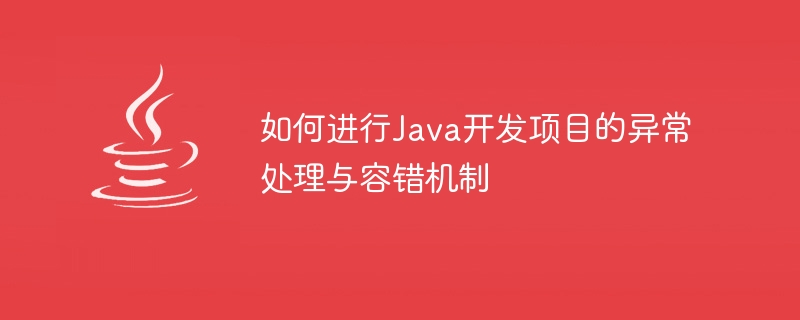

How to carry out exception handling and fault tolerance mechanisms in Java development projects
Overview:
Exception handling and fault tolerance mechanisms are very important when carrying out Java development projects part. Good exception handling and fault-tolerance mechanisms can improve the robustness and reliability of the program and reduce crashes and errors during program operation. This article will introduce how to implement exception handling and fault tolerance mechanisms in Java development projects.
1. Overview of exception handling:
The exception handling mechanism in Java is implemented through the try-catch-finally statement block. When executing a code block that may go wrong, we can catch the exception through the try block and handle it accordingly in the catch block. The finally block is used to release resources or perform necessary cleanup work. Use the try-catch-finally statement block to effectively handle exceptions, prevent program crashes, and provide users with friendly error prompts.
2. Reasonable use of exception types:
When handling exceptions, it is very important to choose the appropriate exception type according to the business logic and requirements of the program. There are many built-in exception types in Java, such as NullPointerException, ArrayIndexOutOfBoundsException, etc. In addition, we can also customize exceptions to meet the needs of actual projects. When handling exceptions, choose the appropriate handling method based on the type of exception, such as rethrowing the exception, recording logs, etc.
3. Best practices for exception handling:
4. Implementation of fault-tolerance mechanism:
In addition to exception handling, some fault-tolerance mechanisms can also be adopted to improve the reliability of the program. The following are several common fault-tolerant mechanisms:
Summary:
When conducting Java development projects, exception handling and fault tolerance mechanisms are parts that cannot be ignored. Good exception handling and fault tolerance mechanisms can improve the robustness and reliability of the program and reduce program crashes and errors. By rationally using exception types, choosing appropriate handling methods, and adopting some fault-tolerant mechanisms, we can effectively handle exceptions and improve program availability and reliability.
Note: The above content is purely fictitious and is for reference only.
The above is the detailed content of How to implement exception handling and fault tolerance mechanism in Java development projects. For more information, please follow other related articles on the PHP Chinese website!
